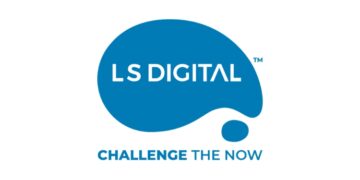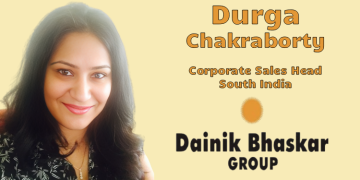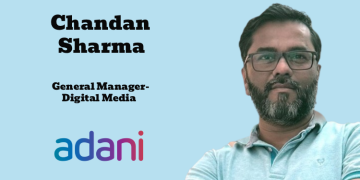The Duopoly
The duopoly that has been formed by Google and Facebook by virtue of being at the forefront in what we can call the hay days of digital media is a very well-known reality for every digital business. While the impact and relevance Google and Facebook continue to hold in daily lives is no secret, the general population does not realize the power and duopoly these two companies hold on a global scale beneath the surface, in the digital advertising space. Not allowing advertisers and publishers to own the data about audiences, no access to information about audience tapped and no-bid details, publishers not having the flexibility to tweak the algorithm for optimizing the buying and selling. These are the reasons why they are a duopoly; they simply do not offer transparency or capability. This has led to an industry-wide movement to find alternative platforms to existing duopolies.
As the digital industry now moves into a more mature zone, there are constant challenges faced by any company that is part of the digital ecosystem because of the duopoly that exists. From how a publisher bids on their programmatic spending to how the social media budget is distributed, these Big Tech companies dictate these aspects from end to end. And due to the staggering presence of these two names on a company’s strategy board, there is very limited opportunity to explore beyond the horizons of Google and Facebook. Such huge dependence on them comes at the cost of disabling internal talent and discourage innovation in the long term.
Although there have been clouds of constraints on growth because of these tech giants, a silver lining has been highlighted amidst this. The silver lining is the strength of Audience Data, which is very cleverly utilized by Google and Facebook, however only within their individual realms. Which in simpler words means that this data is not available to anybody, not to the publishers nor the advertisers lining up to place their ads on through these platforms.
The Good, Bad & Ugly of the Duopoly.
Over the years, Google has been able to build an ecosystem to continuously procure audience data. Essentially, their GA tags, search engine, peer links and their global DNS 8.8.8.8 are what feeds Google with continuous audience data collection. From their point of view, a publisher i.e. any website or an app is a mere content creator. Google AdSense nor the Double click Ad Exchange requires the publishers to share their audience data. Even new-age data management platforms, which help with the identification of audience segments useful for targeting specific users in an online advertising campaign, model their business around Google. It’s not easy for advertisers either as they do not have the option to use custom bid optimization and analytics for improved campaigns. Important information like (event-level data) the kind of users and customers, web pages visited by then, their history of purchases, nor the segments targeted are visible to the advertisers. Media buying information and 3rd party audience data are not shared as well.
Facebook on the other hand has its own sources of audience data too. The large population presence of what is around 2.8 billion active monthly users is the USP that Facebook holds for advertisers. The social media company has access to basically all demographic categories and almost every popular app can be signed into using a Facebook account. The social media company has access to basically all demographic categories. The Facebook messenger for business where users feed their data themselves and the single sign-on (SSO) where an end-user can log in to a third-party application with their social media authentication credentials also contributes to the data. Facebook takes advantage of this base to use for third-party inventory to execute campaigns. The flaw here is that Facebook plays by its own rules as it does not depend on nor need to be published inventory or advertiser data.
Building your Audience.
The new path to success for digital businesses like media companies, agencies, marketers, and new-age AdTech-MarTech companies is to build their own Audience Data. One advantage to accumulate own audience data is that every algorithm change by Google or Facebook can reduce traffic by over 35% and can also spike the ad costs which means an advertiser ends up paying more for traffic as well as more for ads. One more reason is that an open RTB (real-time bidding) platform can easily offer a rate of around $0.20 CPM (cost per thousand impressions) while a DBM company charges $0.80-$1.00 CPM which makes open RTB drastically cost-efficient.
There are not too many platforms that offer the supply as well as the audience in one place hence the dependence on these tech giants. Digital companies need to understand that the audience plays an important role in their growth strategy and that audience data build-up is a long-term investment. It has taken at least a decade for both Google and Facebook to create this database of audience which they cash in on today. The open RTB ecosystem is the best alternative to the DBM, and it is where the CMO and CTO of digital companies will need to work hand in hand for fruitful outcomes.
For publishers, the solution lies to enhance audience data by doing data deals and focus on deep segmentation. It is also suitable to get Demand-Side Platforms (DSP) that would like to use the publisher’s audience. Publishers also need to move beyond the metrics of RFM (Reach, Frequency, and Monetary) and into engagement, Lifetime Value, and the Customer Life Cycle. Advertisers can focus on audience-based buying rather than contextual buying, and exploration of the Open System which will provide results in the long run. Their operations must be driven by analytics and the key result areas should be in terms of impact and performance.
Companies need to take bold steps and be open to challenge the duopoly.
Authored article by Rohit Verma, CEO of TorcAI.
















